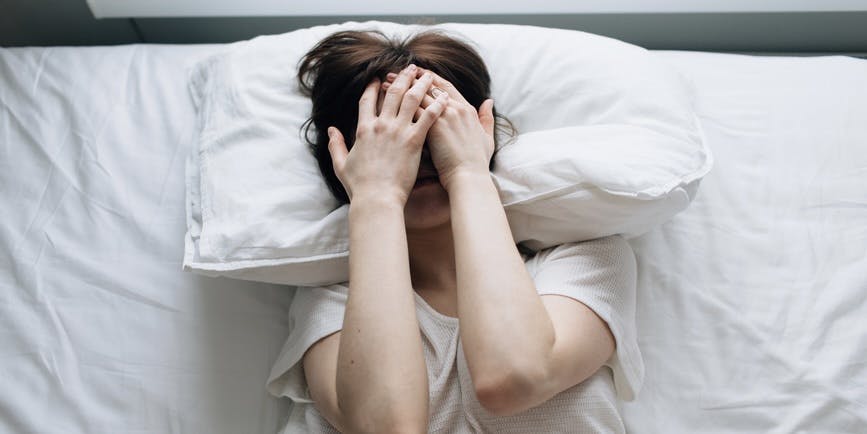
How to treat bacterial vaginosis (BV)

Key Points:
- Bacterial vaginosis (BV) is a very common condition. It’s usually treated with antibiotics.
- Common antibiotic treatments for bacterial vaginosis include BV pills and creams or gels that are put in the vagina.
- You should treat bacterial vaginosis even if you have few or subtle symptoms. Without treatment, BV can cause more serious problems. These include increased risk of sexually transmitted infection (STI) and labor complications.
Bacterial vaginosis (BV) is a very common problem. It affects more than 30% of people with vaginas at least once in their lifetime. This means there are millions of cases of BV every year.
The most common BV symptoms include a strong, fishy vaginal odor and thin, milky white vaginal discharge. Symptoms can appear similar across bacterial vaginosis and urinary tract infections (UTIs), yeast infections and other vaginal conditions. So BV can feel like a UTI or other vaginal condition. A medical provider will help decipher test results and determine the best treatment—typically a course of antibiotics.
Here’s what you need to know about bacterial vaginosis treatment options. Plus, how to get a BV prescription online through Dr. B’s virtual health platform.
Will bacterial vaginosis go away on its own?
Some cases of bacterial vaginosis get better without treatment. But BV can cause potentially serious problems—even if you don’t have symptoms. So it’s a good idea to talk to a medical provider if you suspect that you have BV.
Potential problems from untreated BV include increased risk of:
- Getting a sexually transmitted infection (STI) like HIV, chlamydia or gonorrhea
- Pelvic inflammatory disease (PID)
- Infertility
- Miscarriage, premature delivery and other birth complications
How to treat bacterial vaginosis
Bacterial vaginosis is treated with antibiotics. There are no over-the-counter medications that will treat BV. So you can’t cure BV at home without help from a medical provider.
Sexual partners with penises don’t typically need treatment if a partner with a vagina is diagnosed with BV. If partners with vaginas also have discharge or another sign of infection, they should see a medical provider, too.
Avoid having sex until you’ve finished the full BV treatment course and your infection has gone away. Semen is alkaline and can disrupt the pH of your vagina while it’s recovering. And some BV treatments involve creams or gels that can make it more likely for condoms to break.
Antibiotics can cause side effects. And studies show that bacterial vaginosis comes back in more than 50% of BV patients—even with treatment. So researchers are exploring other therapies to treat BV and make it less likely to return. Possibilities include probiotics and other non-antibiotic treatments.
But for now, a bacterial vaginosis prescription for antibiotics is the way to go.
Medications for bacterial vaginosis
Medications for bacterial vaginosis can be used as a cream or gel that you put in the vagina. There are also BV pills you take by mouth and granules you sprinkle over soft food and eat.
These are the most common medications used to treat BV:
- Clindamycin. Also available as Cleocin and Clindesse, this cream is put into the vagina. It can make latex condoms less effective. So be careful while on this medication and for up to three days after BV treatment ends.
- Metronidazole. Also available as Flagyl and Metrogel-Vaginal, this antibiotic comes as a vaginal gel and a pill that you swallow. It can cause stomach upset and abdominal pain or nausea. So do not drink alcohol while using this medication and for three days after finishing it.
- Tinidazole. Aso available as Tindamax, this medication comes as an oral tablet. Avoid drinking alcohol while using this medication and for three days after finishing treatment.
- Secnidazole. Also available as Solosec, this one-dose medication comes as granules that you sprinkle over soft food. You should not drink alcohol while taking this medicine and for two days after finishing it. Also, you shouldn’t breastfeed for up to four days after finishing this medicine.
How to prevent bacterial vaginosis
There are several things you can do to help prevent BV.
- Avoid douching. The vagina doesn’t require special products or cleaning beyond normal bathing. Douching can disrupt the normal balance of bacteria in the vagina—which makes bacterial vaginosis more likely.
- Use unscented hygiene products. Some products can irritate the vagina, including vaginal deodorants or sprays and scented tampons or pads.
- Practice safe sex. Having multiple sex partners or unprotected sex increases risk of BV and STIs. Use latex condoms and limit the number of sex partners to reduce your risk.
- Don’t smoke. People who smoke are more likely to develop bacterial vaginosis. This is because chemicals in cigarettes affect the immune system.
While antibiotics are effective for BV, some people experience BV that keeps coming back.
You can support a healthy balance of bacteria in the vagina by eating products that contain good bacteria like Lactobacillus. A good diet for bacterial vaginosis might include yogurt or probiotic supplements.
But research in this area is still emerging. So speak with a medical provider before starting any supplements, including probiotics.
Online treatment for bacterial vaginosis
Bacterial vaginosis can be frustrating. But several BV medication options can help you prevent BV or recover quickly.
And you can explore available bacterial vaginosis treatment online with Dr. B!
Start a health assessment for BV antibiotics online. A licensed medical provider will discuss treatment options. If a prescription BV treatment is appropriate, they’ll call the prescription into your chosen pharmacy.
Sources:
Abou Chacra, L., et al. (2022). Bacterial vaginosis: what do we currently know?. Frontiers in Cellular and Infection Microbiology.
American Society of Health-System Pharmacists, Inc.. (2023). Tinidazole.
American Society of Health-System Pharmacists, Inc. (2023). Metronidazole Vaginal.
American Society of Health-System Pharmacists, Inc. (2023). Secnidazole.
Bautista, C.T., et al. (2016). Bacterial vaginosis: a synthesis of the literature on etiology, prevalence, risk factors, and relationship with chlamydia and gonorrhea infections. Military Medical Research.
Chen, R., et al. (2022). Probiotics are a good choice for the treatment of bacterial vaginosis: a meta-analysis of randomized controlled trial. Reproductive Health.
Centers for Disease Control and Prevention. (2022). Bacterial vaginosis - CDC basic fact sheet.
Goje, O. (2021). Bacterial vaginosis (BV) - gynecology and obstetrics. Merck Manuals Professional Edition.
Koumans, E.H., et al. (2007). The prevalence of bacterial vaginosis in the United States, 2001-2004; associations with symptoms, sexual behaviors, and reproductive health. Sexually Transmitted Diseases.
Leitich, H., et al. (2003). Bacterial vaginosis as a risk factor for preterm delivery: a meta-analysis. American Journal of Obstetrics and Gynecology.
Nelson, T. M., et al. (2018). Cigarette smoking is associated with an altered vaginal tract metabolomic profile. Scientific Reports.
Planned Parenthood. What is bacterial vaginosis? Symptoms, signs and causes.
Ravel, J., et al. (2021). Bacterial vaginosis and its association with infertility, endometritis, and pelvic inflammatory disease. American Journal of Obstetrics and Gynecology.
Sobel, J. D. (2022). Bacterial vaginosis (beyond the basics). UpToDate.
Sign up for the free Dr. B newsletter for a weekly report on the latest in healthcare + research-based advice for staying healthy and mentally well.
Related articles







